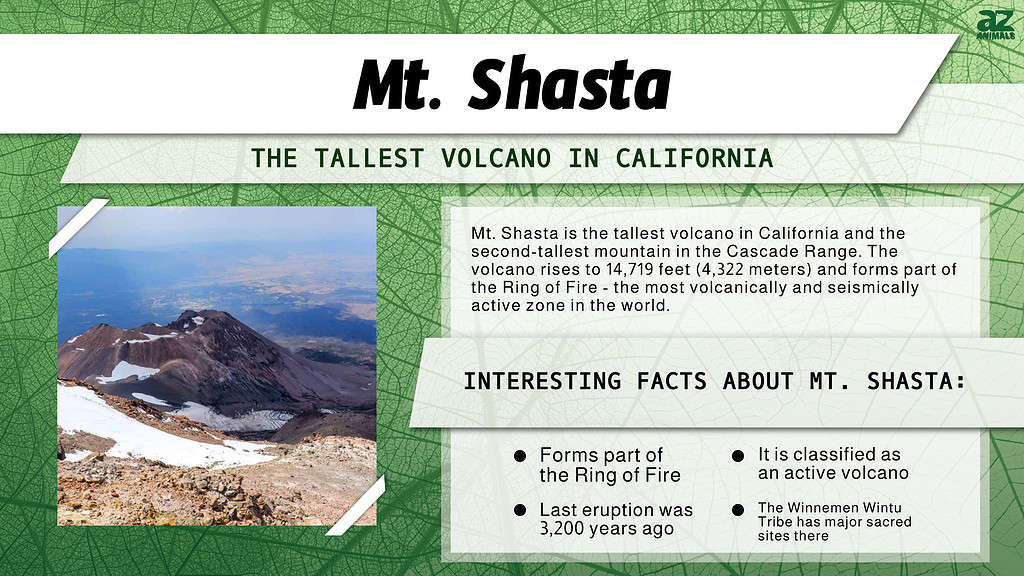
Nestled in northern California, in Siskiyou County, Mt. Shasta stands as a majestic mountain, a natural wonder, and the tallest volcano in California. Surrounded by its pristine forests, lakes, and rivers, the volcano has been worshipped for centuries by Native American tribes, adventurers, scientists, and spiritual seekers. Let’s dive in and explore the details of another California jewel.
Discover the Volcano and Its Origin

Mt. Shasta, the tallest Californian volcano, rises to 14,179 feet.
©shippee/Shutterstock.com
Approximately 60 miles south of the Oregonian border, Mt.Shasta prominently stands between the towns of Weed and Mount Shasta. Nestled in the Cascade Range, the volcano rises to 14,719 feet (4,322 meters).
It is the tallest volcano in California, ahead of the Long Valley Caldera at 11,122 feet and the Mammoth Mountain at 11,059 feet. Mt. Shasta is also the second-tallest mountain in the Cascade range and the fifth in California.
Mt. Shasta is a composite volcano or stratovolcano built throughout history with alternate layers of lava and ash. Along with the other Cascade volcanoes, it forms part of the Ring of Fire — the most volcanically and seismically active zone in the world.
Several million years ago, the Pacific Plate began subducting beneath the North American Plate. Thus, the descending oceanic crust melted, generating magma chambers deep beneath the surface. The magmatic intrusions built up over time and erupted through the Earth’s crust, giving birth to an older volcano.
Approximately 500,000 to 300,000 years ago, the volcano’s north side collapsed and formed one of the largest landslides in history, covering more than 170 mi². Mt.Shasta then began forming on the remnants of the older volcano. Visitors can see the remains of the oldest four cones on the mountain’s south side.
Mt. Shasta’s Eruption Activity
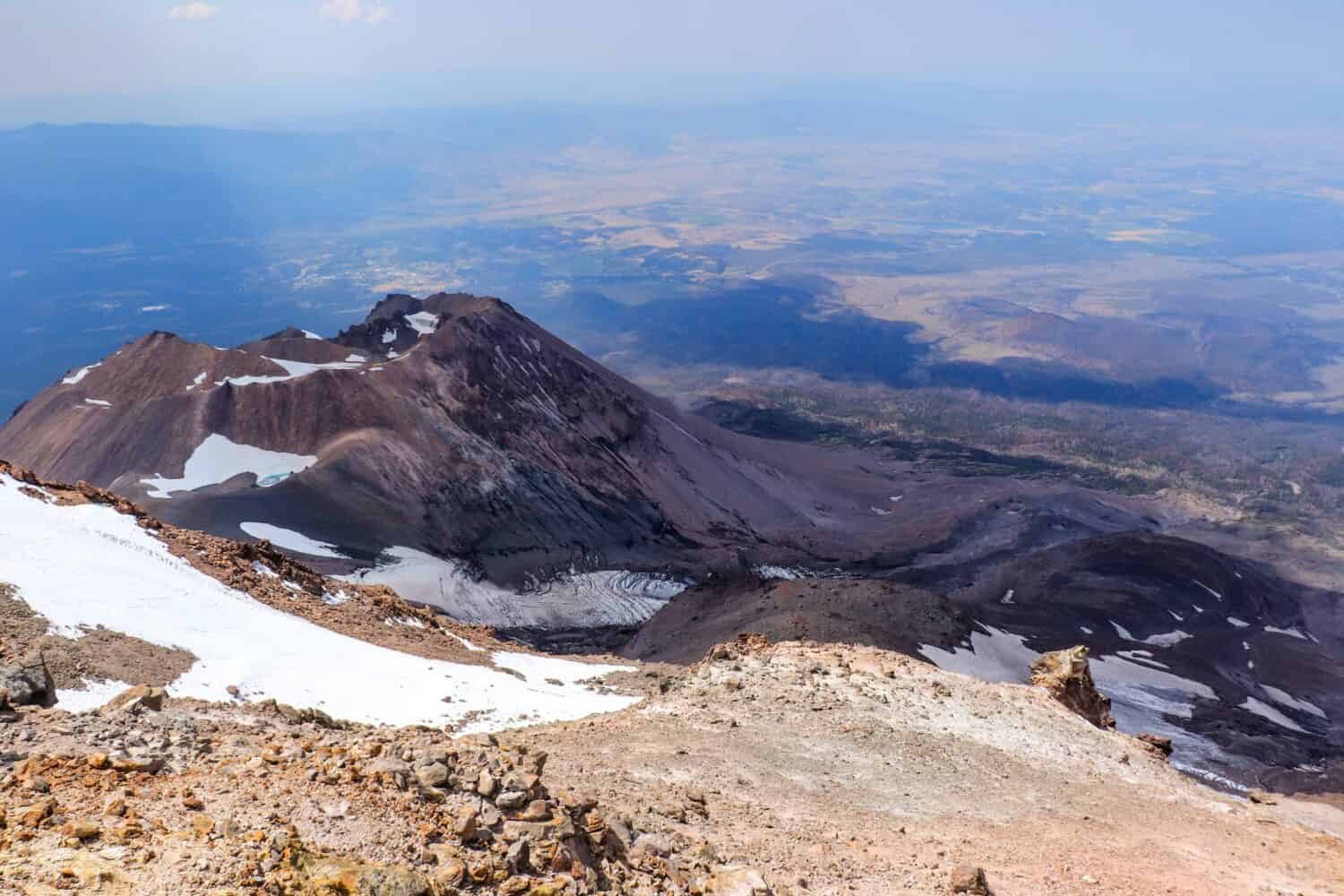
Mt. Shasta’s eruptions have shaped the surrounding landscapes.
©TheSocialHermit/Shutterstock.com
Though dormant, Mt. Shasta is still considered and classified as an active volcano. But it does not erupt on a regular timescale. Instead, research has shown that the volcano erupts with ten or more eruptions occurring in short periods (500-2,000 years). And then, these periods are separated by longer intervals free of eruptions (3,000-5,000 years).
Evidence implies that magma erupted at the surface approximately 3,200 years ago. However, more minor eruptions in which magma nearly reached the surface and then reacted with groundwater generated small explosions that redistributed ancient rocks and debris are possible. However, these events remain challenging to study because of the poor preservation of the deposits.
Mt. Shasta eruptions have shaped the landscapes that visitors can admire nowadays. Eruptions have created domes and lava flows on the steep hills of the mountain and extended as far as 12.4 miles. As a result of the eruptions, mudflows sometimes traveled tens of miles from the volcano.
What Kind of Vegetation Surrounds Mt. Shasta Today?
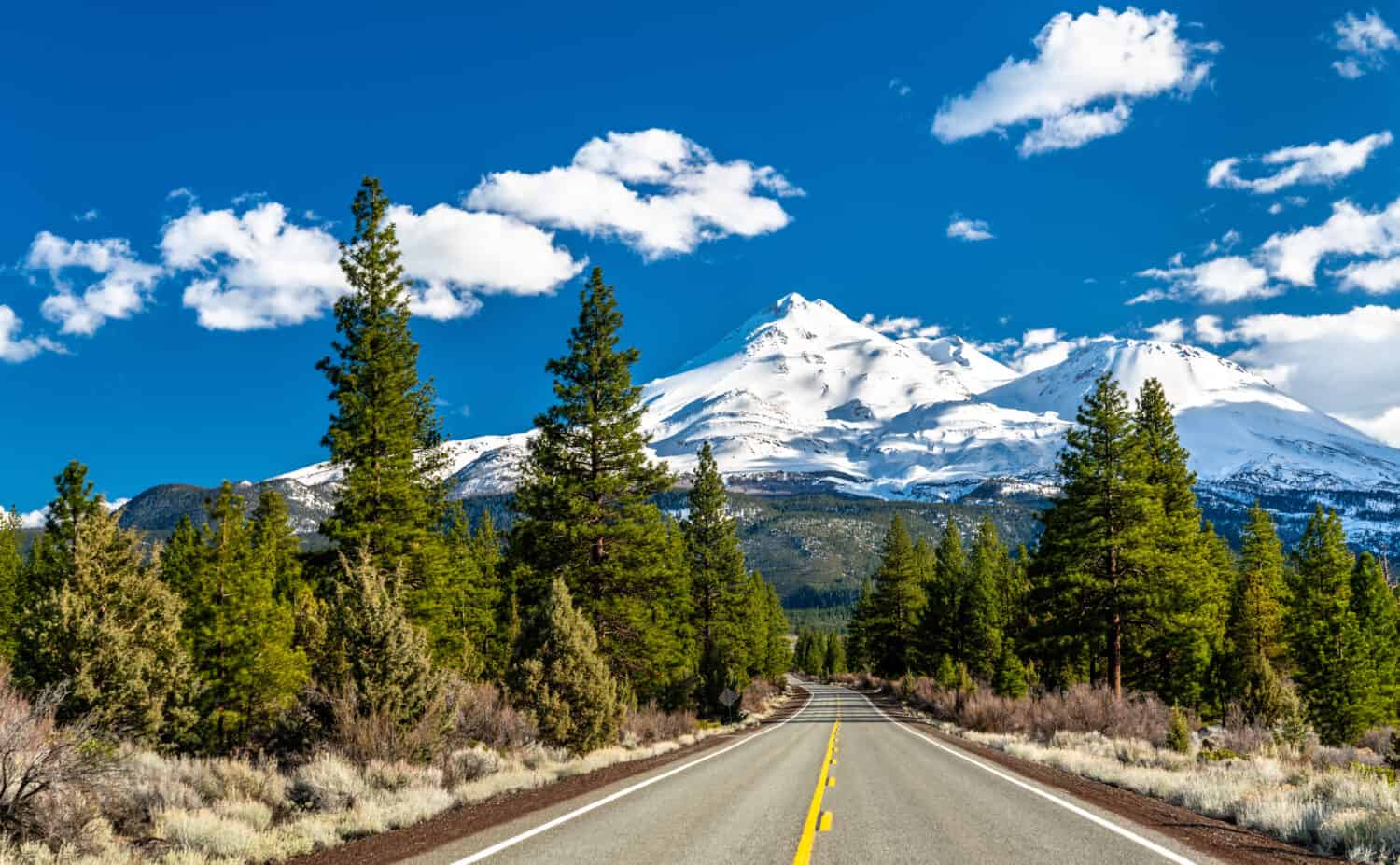
Various species of coniferous are the main trees surrounding Mt. Shasta.
©Leonid Andronov/Shutterstock.com
Two separate forests — the Trinity National Forest and the Shasta National Forest —established in 1905 were combined in 1954, giving birth to the Shasta-Trinity National Forest. The National Forest covers 2.2 million acres of Northern California and has Mt Shasta as its highest point.
The surrounding areas of Mt. Shasta have rich and diverse vegetation, plants, and flowers. Thanks to the variation of elevation and climatic conditions, distinct habitats support a range of various biodiversity.
The lower slopes are adorned with the National Forest, consisting of coniferous species such as the ponderosa pine, sugar pine, douglas-fir, and others. The species switch to western white pine and red fir at higher elevations. Once the climate evolves into alpine tundra, it is too hard for most coniferous to live. Foxtail, whitebark pines, sedges, and low-growing plants are some of the only ones able to survive the living conditions.
Many wildflowers also populate the area, including the Indian pink, western azalea, mountain violet, and blue gentian, among others.
What About the Wildlife?
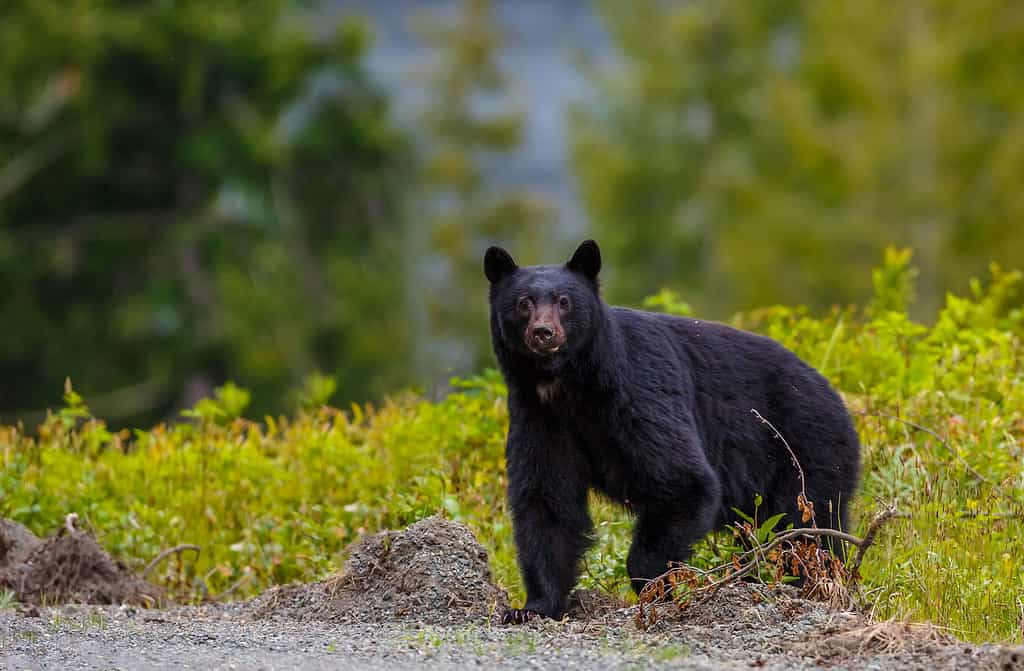
Black bears can often be seen in the Shasta-Trinity National Forest.
©Menno Schaefer/Shutterstock.com
The wildlife that inhabits Mt. Shasta is as diverse as its flora. Large mammals thrive there, as Mt. Shasta is home to black bears, elks, Columbian blacktail deer, mountain lions, bobcats, coyotes, and foxes.
Some can be lucky at higher elevations and spot majestic birds such as the golden eagle and the peregrine falcon.
Some smaller species made their home in the forests, including various species of squirrels, chipmunks, jackrabbits, and bats. Multiple birds also populate the areas, including Clark’s nutcracker, the hermit thrush, and the northern goshawk.
But all this wildlife is only possible with the rivers and lakes that support the vibrant ecosystem. River otters frequent the rivers, along with crawdads, frogs, and fish species such as the rainbow trout and the rare McCloud River redband trout.
Mt. Shasta’s Cultural and Spiritual Impact

Mt. Shasta has been seen as a sacred place by various Native American tribes.
©iStock.com/ronniechua
Beyond its geological significance, Mt. Shasta also holds profound importance to numerous Native American tribes. For centuries, Mt. Shasta has been regarded as a sacred place of ceremony, healing, and connection to the spiritual realm—the Winnemen Wintu tribe claims to have major sacred sites on Mt. Shasta. Various tribes like the Shasta, Modoc, and Karuk consider the mountain a spiritual power and wisdom source. Other tribes believe it holds the creator of the universe. Thirteen tribes are working with the National Forest Service to protect and guarantee their access to sacred sites around Mt. Shasta.
Aside from Native Americans, the mountain became linked to spiritual and mystical beliefs in the late 19th and early 20th centuries. Spiritual seekers and new-age communities started to visit and claimed they had transformative experiences between them and the mountain.
Mount Shasta is now believed to be the root chakra of the world. Chakras are a concept based on energy sources throughout the body. The root chakra, also known as Muladhara, is located in the lower base of the spine and roots a person to the Earth and themselves. Mt. Shasta has been said to give out intense energy and embody the grounding process.
Things to Do in and Around Mt. Shasta
Whether you seek adventure, relaxation, or some spiritual connections, Mt. Shasta and its surroundings have many activities to offer.
Hiking

Family hiking in the woods.
©Hero Images/iStock via Getty Images
Mt. Shasta offers an extensive range of hiking trails, from easy to demanding summit climbs. Hikers can go around the entire Lake Siskiyou using picturesque paths. Panther Meadow Loop Grey Butte Trail or Castle Lake Trail are moderate hikes for extended activity. But if you are up for the challenge, Mt. Shasta via Avalanche Gulch Route will take you to the summit, with a 10.1-mile hike out and back and a 7,000 vertical foot ascent.
Discover the waterfalls

The McCloud Falls are some of the most beautiful waterfalls in California.
©Wirestock Creators/Shutterstock.com
The McCloud Falls are the most famous waterfalls that run from Mt. Shasta and the surrounding mountains. Composed of three distinct waterfalls, Lower, Middle, and Upper Falls, all have stunning turquoise waters worth visiting!
Skiing and Snowboarding
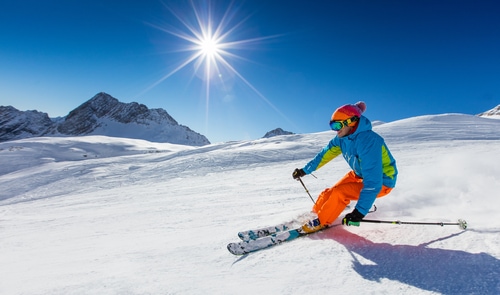
©Lukas Gojda/Shutterstock.com
During the winter season, Mount Shasta’s slopes become a winter wonderland. The ski resort, Mt. Shasta Ski Park, is a popular destination for winter sports lovers. Skiing and snowboarding are available with 32 slopes for guaranteed fun and adrenaline. And if you prefer cross-country skiing, multiple trails are available around the mountain.
Fishing
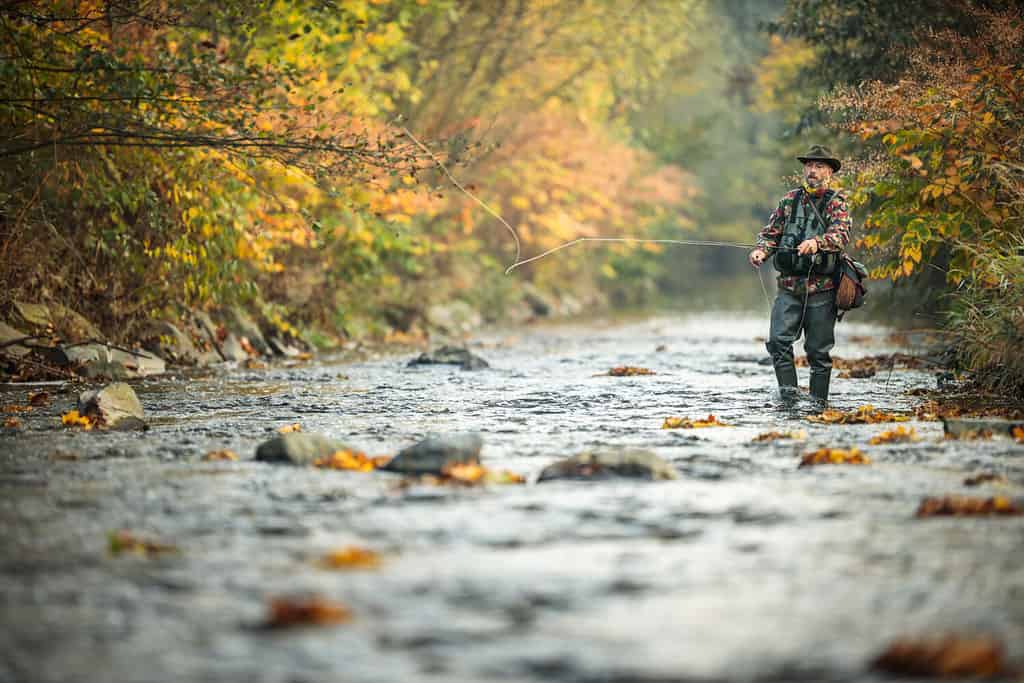
©l i g h t p o e t/Shutterstock.com
If you prefer to spend a nice and quiet day fishing, Mt. Shasta has everything you need. In the many rivers, streams, and lakes surrounding the mountain, you can try to catch the brown or rainbow trout or the rare McCloud River redband trout.
Sightseeing
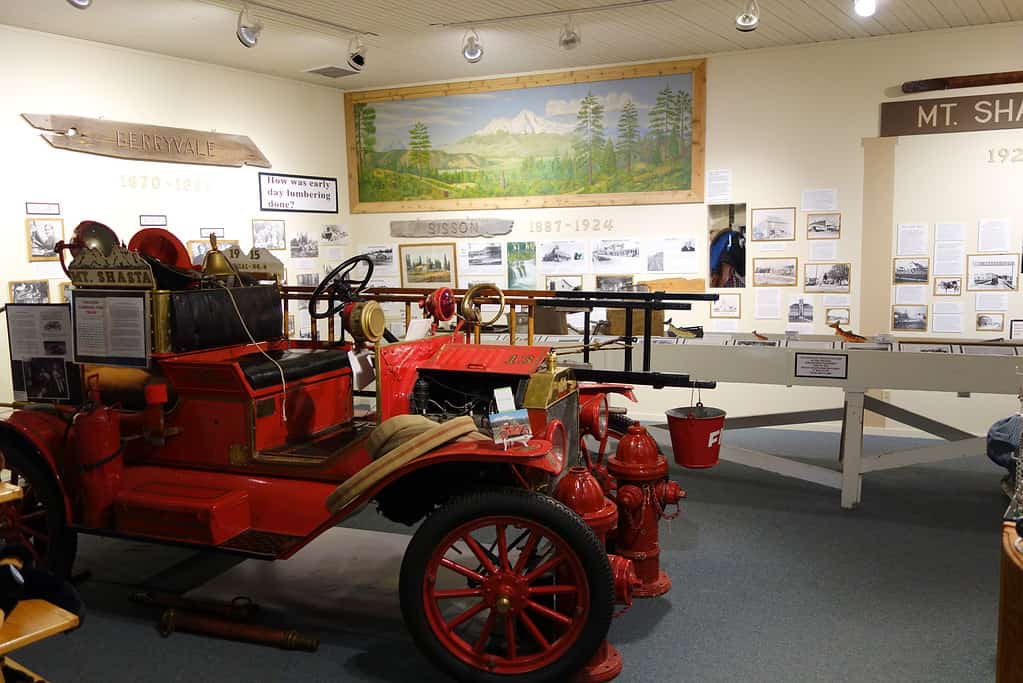
Exhibit at the Sisson Museum.
©Daderot / CC0 1.0 – License
Explore the charming town of Mount Shasta and its unique galleries, shops, and restaurants. Don’t forget to stop at the Sisson Museum, a small museum that offers insight into the town’s history — previously called Sisson — and the region’s natural, cultural, and spiritual history.
Caving
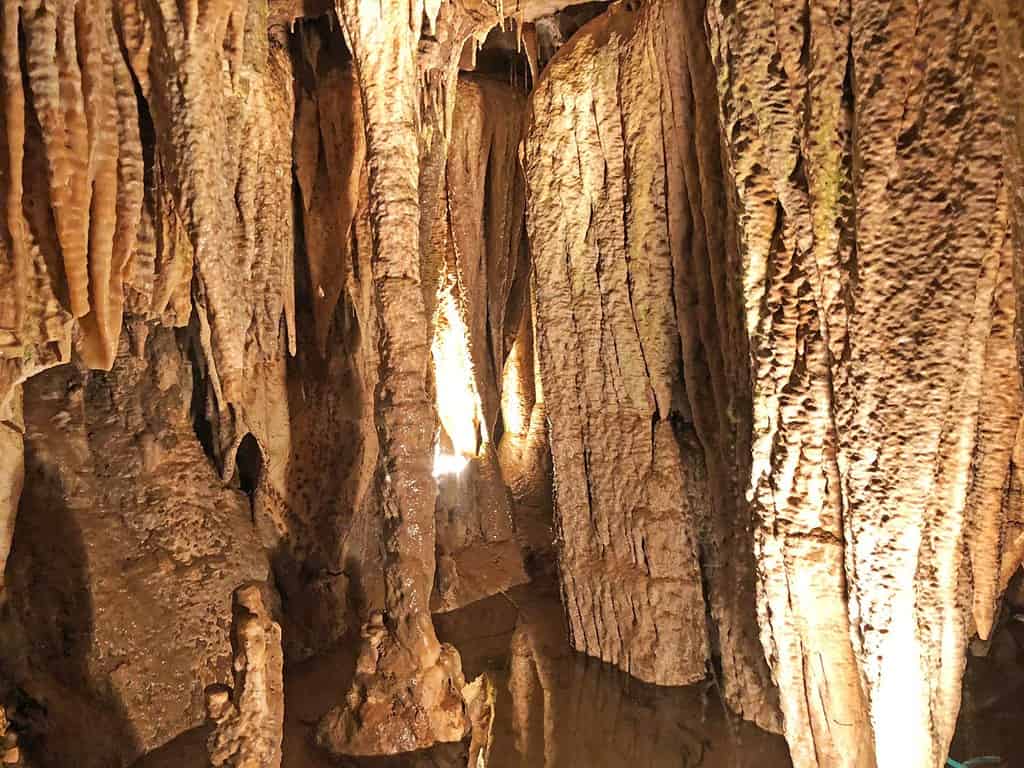
©Lindasj22/Shutterstock.com
Go cave exploring! Many lava tubes surround Mt. Shasta, and some are accessible to the public. Lava Beds National Monument allows visitors to wander through the underground formations. Pluto’s cave is a visitor’s favorite, with a challenging hike up and down the lava tube. The cave extends over a mile underground and without any light. So be careful if you feel adventurous; bring water and headlamps to explore the cave further.
And if these are not enough, you can try your hand at water activities in the summer or some spiritual retreats! Always keep an eye out for the diverse wildlife the tallest volcano in California and its surroundings have to offer.
The photo featured at the top of this post is © Zach Zheng/Shutterstock.com
Thank you for reading! Have some feedback for us? Contact the AZ Animals editorial team.







